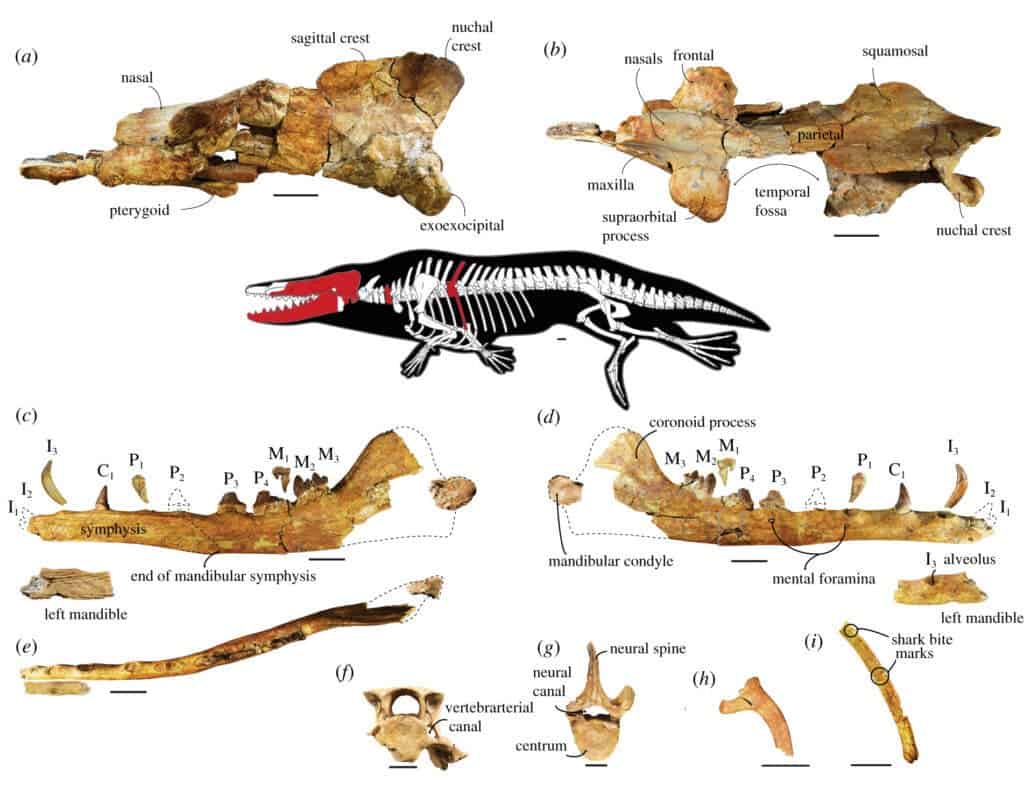Roughly one decade ago, Egyptian environmentalists uncovered the bones of an ancient whale — in the sands of the Western Desert. Now, a new paper details this strange finding, describing a brand new species of ‘semi-aquatic’ whale ancestor.

This four-legged whale ancestor lived around 43 million years ago, and was, by all indications, an accomplished hunter.
Grandma whale
“We chose the name Anubis because it had a strong and deadly bite,” said paleontologist Hesham Sallam, professor of paleontology at Mansoura University in Egypt, who led the research effort. “It could kill any creature it crossed paths with.”
“Phiomicetus anubis is a key new whale species, and a critical discovery for Egyptian and African palaeontology,” the study’s lead author, Abdullah Gohar, told Reuters news agency.
The whale is part of the extinct Phiomicetus genus of protocetidae whales — essentially, the family from which modern whales emerged. It was given the name Anubis in honor of the ancient Egyptian god of death, as judging from its fossils, the animal was quite an accomplished killer.
The animal’s elongated snout and skull point to it being a capable carnivore both in regards to grasping prey and chewing through tough hides and bones.
Perhaps its most unusual features, for most people, would be that P. anubis was semi-aquatic, and possessed four stout legs instead of flippers. The area that makes up the Western Desert today used to be a sea 43 million years ago. P. anubis hunted in its waters and, likely, walked around its shores.
The fossil was first found in 2008, but Sallam put off investigating it until 2017, as he worked to assemble a team of paleontologists that would do the fossil justice. Their work culminated last month when they officially confirmed that the fossil belongs to a completely new species.
From a paleontological standpoint, the discovery is particularly exciting as P. Anubis is one of the last known members of the whale family that retained functional, land-going limbs. Whales as a family have evolved from land mammals that returned to the sea, also transitioning from a herbivorous to a carnivorous diet in the process. Today, all members of the whale family (cetaceans) live exclusively in the seas and oceans. Thus, they have quite an interesting story to tell.
P. anubis was a species that emerged during that transition period, making it a valuable source of information on how it took place and when. Fossils from this window of the whales’ evolutionary history are particularly valuable for helping us understand when they finally made the full transition to ocean life, and where. Currently, our best indication is that it took place around 50 million years ago in today’s India or Pakistan, but this is by no means a settled topic. The new species will undoubtedly help flesh out our understanding of this timeline.
Surprisingly for a desert, Egypt’s Western Desert is quite famous for its prehistoric whale fossils. One area in particular, the White Valley of Wadi al-Hitan, has been declared a natural World Heritage site and attracts a lot of tourist attention due to its prehistoric whale fossils.
The paper “A new protocetid whale offers clues to biogeography and feeding ecology in early cetacean evolution” has been published in the journal Proceedings of the Royal Society B: Biological Sciences.


